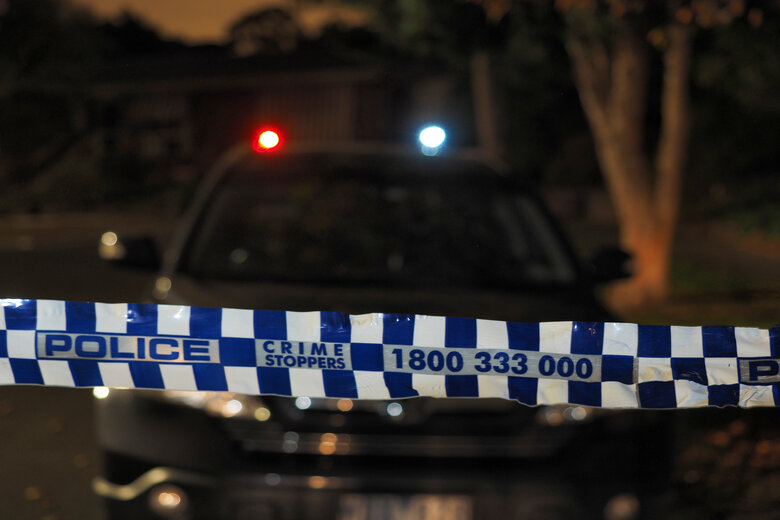
Technology and analytics played a key role in the discovery and safe return of four-year-old Cleo Smith who disappeared from a West Australian campground last October, writes Con Balaskas.

Speaking at a press conference after the 18-day search, WA Premier Mark McGowan said the success of the mission was the result of “great police work by great people” and that technology played a key part in finding Cleo.
Additionally, the Premier said that discovering vital clues in the case came from a combination of “human intelligence, detective and analytical work”.
Police agencies and emergency services around the world are increasingly turning to technology to solve their most complex challenges. Rather than consumer-grade technologies, these agencies depend on highly specialised tools and solutions to support their essential daily work.
Managing data with automation
Often the very first point of contact between citizens and public safety agencies occurs when a 000-emergency call is made. This triggers a chain reaction in how emergency resources are managed and deployed.
Call takers and dispatchers within public safety agencies can be thought of as the ‘first, first responders’. Their role is to capture and share critical incident details, coordinate resources and help frontline responders to arrive on the scene better informed about what they’re about to face. In many cases, they also provide a voice of calmness for callers in distress while they wait for urgent support.
In the search for Cleo, Premier McGowan said searching through call transcripts formed an important part of the successful mission.
During major emergencies and complex investigations, call takers and dispatchers work under pressure and at great speed to capture, share and make correlations with data. Oftentimes, they have to transfer information between disparate or incompatible systems and transcribe their notes using pen and paper.
However, new technologies are helping to alleviate the burden on these workers by simplifying and automating the way they work. One example of that is cloud-based, smart transcription tools. These services can take voice audio from phone calls from the public and transcribe it into searchable text transcripts. As a result, public safety agencies can gain enhanced intelligence and capability in managing emergency calls, helping them to save time and save lives.
New technologies are helping to alleviate the burden on workers by simplifying and automating the way they work.
A combination of video technologies are also supporting police agencies with their search and rescue missions and other investigations. Among them are Automatic Number Plate Recognition (ANPR) systems which can scan through hundreds of license plates in a matter of seconds. These systems capture valuable data including dates, times and GPS coordinates of vehicles. Those data points can be used to trigger real-time alerts to improve situational awareness, safety, and provide valuable data that can be analysed to support investigations.
Bodyworn video is another technology used extensively within public safety environments. These video cameras can help to increase safety for frontline officers as well as accountability and transparency in their interactions with members of the public. In police work, bodyworn video cameras also capture vital evidence which can help to uphold the results of an investigation in court.
Drones were also used to assist in the search for Cleo, bringing the benefit of ‘eyes in the sky’ to identify clues that may not be immediately visible at ground level. When combined with AI-powered video analytics, mobile video sources from drones as well as fixed camera systems can further help to identify clues that people might otherwise miss. Video analytics is a powerful tool in public safety, often helping to find the ‘needle in the haystack’ clue buried within hours of video footage.
Mobile technology
Most of us carry mobile phones with us wherever we go, so it’s natural to assume that police and other public safety officials are using mobile technology in similar ways that we do to support their daily work.
In reality, it’s only been in recent years that many Australian authorities have embraced mobile technology to streamline and simplify a number of their essential tasks. Unlike consumer apps, purpose-built mobile apps for public safety place essential operational information at officers’ fingertips. That information includes critical details from computer-aided dispatch (CAD) systems, helping them to respond to calls for assistance from the community and work more efficiently and safely in a variety of situations.
This enhances their situational awareness – for example, helping officers to know when to proceed with caution before approaching a potentially dangerous suspect.
Mobile apps also help police and other public safety officials to work more efficiently. Western Australia Police estimates that it handles up to 180,000 handwritten infringement notices per year, but a new smart mobile app has digitised its infringement management practices and is greatly reducing the need to record information with pen and paper. That means police officers can spend more time on police work in the community and less time manually inputting information back at the station.
Social media
Another area that crime analysts working on Cleo’s disappearance focused on was social media content. This included sifting through social posts to identify potential leads into her whereabouts.
In today’s world, social media content has become a valuable data source for investigations. It is also one of many data sources public safety agencies can access via intelligent software platforms to help them consume and present a variety of different types of information to support their investigations, planning, and incident management.
At the same time, we know that people want to use the technology they carry every day to help share tips with public safety agencies to help make their communities safer. In fact, a recent global study from Motorola Solutions developed with Goldsmiths University of London found that 68 per cent of people want to use technology to help, such as sharing images or video with public safety agencies.
When police need to share intelligence with each other or other public safety agencies instantly, their go to tool is always their two-way radio.
Although radio communication is a well-established technology that has served public safety for many years, it provides instant, reliable, team-based communication and collaboration capabilities so that groups can stay informed in the moment.
Sadly, not all investigations like Cleo’s disappearance lead to successful outcomes and by no means does having the right technology guarantee that serious crimes can be prevented.
It should also not be forgotten that the purpose of technology is to support, enable and empower the people working within public safety environments by helping them to work more safely and effectively.
As the public safety environment grows more complex, our emergency services and authorities need technologies that allow them to remain focused and supported in delivering their essential daily work. When successful outcomes are achieved, it helps to remind us that people and technology can form a powerful partnership in making our communities safer.
Con Balaskas is Vice President and Managing Director Australia and New Zealand for Motorola Solutions.
Comment below to have your say on this story.
If you have a news story or tip-off, get in touch at editorial@governmentnews.com.au.
Sign up to the Government News newsletter